Reviews 13 min read
Audi Q4 e-tron: First premium brand car to use the MEB platform
Discover EV attends the press launch of the Q4 e-tron, Audi's first EV in the compact SUV class, which will play a central role in their electrification strategy. Given the current pandemic, this is the first time any UK media has been able to drive this vehicle. Here are our thoughts…
Discover EV expert verdict...
- Up to 316 mile range
- Interior space
- Wide range of power options, as well as rear and four-wheel drive models
- Expensive compared to some rivals
- Quartic steering wheel
- Not quickest in class
Overview
Audi’s so-called versatile all-rounder – and the first car to be based on the VAG Group MEB platform – will be available in the UK in four trim options: Sport, S line, Edition 1 and Vorsprung. It also debuts Audi’s augmented reality head-up display, offers a wide range of power options and rear and four-wheel drive, but it is expensive when compared to the Skoda Enyaq iV and Volkswagen ID.4 which share the same technology. It is however on a par with the Mercedes EQA 250 Sport, Polestar 2 Long Range Dual Motor and Volvo XC40 Recharge, so how does it stack up? We spend a day with a Q4 40 e-tron Sport, capable of up to 316 miles and predicted to be the brand’s most popular model.
Driving
The 40 e-tron uses a 201bhp motor to drive the rear wheels taking a unperturbed 8.5 seconds to reach 62mph, but thanks to 229lb-ft of torque available from the get go it feels quick at low speeds. While it’s on a par with the EQA, the Polestar 2 and Volvo XC40 Recharge are twice as powerful – although a lot of people would say in a compact SUV application having less power makes it a lot more useable and given its positioning – as a family hack – they wouldn’t be wrong.
The batteries are located between the axles beneath the passenger compartment, at the lowest point of the car, which ensures a low centre of gravity and a near 50:50 weight distribution ratio, favouring handling. In terms of suspension setup it features a classic MacPherson strut layout, with the front axle complemented by a compact four-link rear design similar to larger models from Audi.
Our test car was equipped with the £950 optional suspension damper control, which manages the dampers in line with the driving situation, and adjusts at five millisecond intervals to ensure optimum performance in fast changing road and driving conditions. Whether this had much impact on the handling is obviously hard to say but overall it was more eager to turn in with better body control and accuracy than the other MEB based cars. The ride is firm, but still supple so it’s able to soak uneven road surfaces with aplomb, and because the seats are very comfortable you’d have no problems covering big distances in this car.
The oblong steering wheel, which has been chosen for aesthetic reasons to fit in with the styling of the cabin looks very cool but is totally unpractical, in that if you use the 'pull push' method of steering it’s not very fluid when feeding it through your hands. It is also equipped with electromechanical steering featuring speed-dependent power assistance which we weren’t a fan of as you never knew how much steering effort to put in through the corners when pushing on.
The Drive Select gives you the choice of Comfort, Auto, Efficiency, Individual or Dynamic modes – while the Range and Efficiency programmes keep energy consumption in check by limiting maximum speed. While in drive, but with no accelerator pedal input, the Audi Q4 e-tron will enter coasting mode to make the most of the vehicle's momentum – unless you select energy recuperation (by switching to Brake gear). In the majority of everyday driving situations the rear electric motor is solely responsible for the Q4 e-tron's braking, with the electric brake booster only activating the conventional hydraulic brakes as well if greater braking force is required, and unlike in a lot of EV’s we’ve experienced, the transition is almost unnoticeable.
Range and running costs
The Q4 40 e-tron can support up to 125kW DC charging, with Audi claiming it can restore 80 per cent of charge from a 5 per cent baseline in 38 minutes at high power charging stations, and provide an additional 80 miles of range after approximately 10 minutes. The official consumption is 3.53 miles per kWh, which isn’t great but it does weigh over two tonnes. Using a home AC wall box will require an overnight charge taking 11.5 hours to recharge a fully depleted battery. It also offers E-Tron Charging Service, whereby you get an RFID card and sign up to a tariff that gives you access to chargers from different networks, so you don’t have the hassle of signing up to individual ones.
State-of-the-art thermal management ensures energy is used as efficiently as possible by accelerating warm-up of the battery to its optimal operating temperature and maintaining that temperature throughout the journey. This ensures that its full power, and the power of the entire drive system, is available after a short time even in extremely cold conditions. In addition, the optional heat pump provides additional energy management by rapidly heating and cooling the interior using the thermal losses from the electric components and the temperature of the outside air. Using eco-friendly CO2 as a refrigerant, the heat pump can reduce a loss of range caused through the use of the climate control system, especially in winter
While it’s expensive compared to the VW and Skoda derivatives with prices starting from just over £40k, it is Audi’s cheapest electric model and it’s one of the few EVs that can provide 300-plus miles of range at this price point. With a potential 316 miles, that’s 53 more than the EQA, 18 more than the Polestar 2 and 57 more than the XC40 Recharge. And as well as boasting zero tailpipe emissions, you can also be smug in the knowledge that it has a neutral carbon footprint, thanks in part to the use of eco electricity at the Zwickau plant. You can even opt to have upholstery and trim made with recycled materials.
Like all electric cars, the cost-per-mile of running the Audi Q4 40 e-tron depends on where you charge it but it’s still cheaper than filling up at the pump. It also enjoys total exemption from road tax and congestion charges, while company car owners benefit from 1 per cent Benefit in Kind tax. And because it’s an electric vehicle it has fewer moving parts compared to an ICE car so service intervals are either 19,000 miles or 2 years, whichever comes first, and interestingly residual values at 3 years / 60,000 miles according to CAP are 45.6 per cent - exactly the same as the Polestar 2 and XC40 Recharge with the EQA performing a little better at 49 per cent.
Design
Like most car manufacturers, the SUV body style remains the fastest growing segment for Audi (with Q models forecasting to represent 41 per cent of all UK sales in 2021), so it’s not surprising Audi has decided to bring an electrified version of the Q range to market.
The Q4 is essentially a smaller e-tron, but there are a few new details. Inside this includes a flat top and bottomed steering wheel featuring haptic touch panel buttons (on S Line models and optional) to adjust things like the volume, together with a 10.25-inch Audi Virtual Cockpit presenting key vehicle status, navigation and media information in two types of display views, and the latest infotainment system. Featuring a 10.1” touch-screen display it incorporates MMI Navigation Plus (as well as Audi connect services and the Audi smartphone interface) with destination entry via handwriting recognition and voice control, 3D map display and online traffic information. In terms of fit and finish and the use of premium materials, it’s all very typical of Audi.
Outside its more aggressively styled than its bigger brother, but it’s pronounced wheel arches, blanked-out grille and horizontal rear light strip are all very Audi. It actually remains faithful to the striking Q4 concepts of 2019 with short front overhangs, large wheels and pared back surface treatment intersected by super-precise lines and its muscular guise may tempt people away from the more sedate looking Volkswagen ID.4. There’s a choice of eight paint finishes, including new Aurora Violet previously reserved for Audi Sport models, with contrast coloured bumpers and aluminium roof rails.
Like every electric car, a lot of emphasis was paid to aerodynamics with numerous details promoting smooth air flow, including active cooling air inlets, smooth underbody with three-dimensional wheel spoilers, alone adding three miles of range. As a result the Q4 has a drag coefficient of 0.28, lowering to 0.26 in the Sportback variant, which just falls short of the BMW iX’s 0.25 and the upcoming Tesla Model Y’s 0.23.
Comfort and practicality
The Q4 majors on space, so while it shares roughly the same exterior dimensions of a Q3, it has space inside akin to the Q5. It’s like a TARDIS in that respect, or as Audi puts it in PR spiel – a compact SUV with big ideas! It also has a sliding rear bench, allowing for a rival beating boot volume of 520 litres and compared to the e-tron, it has additional storage cubbies, including bottle holders in the door armrests. Rear passenger space is generous to say the least with plenty of head and legroom for three adults over 6 ft.
Audi is making a big deal of the optional augmented-reality head-up display (standard for Vorsprung versions and available as an option for all others as part of the Technology Pack), which projects information from the driver assistance, safety and navigation systems in the driver's field of view in common with earlier systems, but also features guidance symbols which react dynamically to driver actions and the movements of other vehicles. As a £1200 option we’re not sure it’s worth it however. If you’re feeling flush you might want to add Audi’s premium sound system courtesy of its new and exclusive audio partner SONOS (for Vorsprung models and optionally available for others as part of Comfort and Sound pack).
The central touchscreen still has haptic feedback, but there is only one touchscreen with manually-controlled air-con switches below it. Unfortunately we found it a little slow which makes it feel clunky at times. What we did like is that when to you go to search a destination it will come up with options such as Home but also different types of charging stations from slow to ultra fast, and when you select a destination MMI Navigation Plus will give you detailed route information taking you via chargers prioritising high power units – which is updated on a daily basis.
There will be three variants from launch, the 35 (with a smaller 52kWh net battery capable of DC charging at up to 7.2kW AC and 100kW DC), 40 and 50 Quattro (with a bigger 77kWh net battery capable of charging at up to 11kW AC and 125kW DC). The 35 and 40 versions are rear-wheel drive and in case you hadn’t already guessed the 50 is all-wheel drive and sacrifices around 20 miles of range for extra performance, giving it a 0-60mph acceleration time of 6.2 seconds before hitting 111mph, instead of the electronically-limited 99 mph.
Each of the performance options will be available in four specifications Sport, S line, Edition 1 and Vorsprung. Although our car had over £15k of options, the entry level is well enough equipped with 19” aero alloys in Graphite grey and gloss turned finish, comfort suspension, progressive steering and Audi drive select, LED lighting (outside and in), power operated tailgate and folding, auto-dimming and heated mirrors, exterior mirrors incorporating projection light, casting e-tron logo onto the ground, heated front sport seats with 4-way electric lumbar support, automatic 3-zone air conditioning and comfort auxiliary air conditioning for pre-heating/cooling, USB or wireless connectivity, cruise control, lane departure warning, rear parking sensors, Audi Pre-sense front with pedestrian and cyclist detection, camera-based traffic sign recognition, swerve and turn assist, and keyless-go.
The S Line model, which is predicted to be the most popular Q4 e-tron trim, gets 20 inch alloy wheels, Sport suspension with dynamic spring rates and damper settings, 15mm lower ride height, sportier exterior and interior styling and privacy glass. The special Edition 1 trim adds Matrix LED headlights (incorporates 16 individually actuated LEDs to offer enhanced and even more precisely targeted illumination) and unique exterior and interior trim, while the Vorsprung model gains 21 inch wheels, suspension with damper control, Nappa leather, panoramic glass sunroof, Virtual Cockpit Plus and a more comprehensive driver-assistance package.
Verdict
There are quite a few rivals as the market for electric compact SUVs is starting to get bigger, with the Hyundai Kona Electric, Kia e-Niro, Skoda Enyaq iV and VW ID.4 all coming in at the lower end of the price bracket (under £35k) and the Mercedes EQA 250 Sport, Polestar 2 and Volvo XC40 Recharge and Mustang Mach-E (which Audi don’t make mention of in their comparison data) costing the same.
As the first model from Audi to be based on the VW Group's electric platform, the Audi Q4 e-Tron ups the ante compared to its Skoda and VW cousins – not just in terms of looks, but overall craftsmanship, handling and performance so if you can stretch to more money it’s worth it. However over its German and Swedish offerings we’d probably go for the Polestar 2.
Audi’s newest entry-level electric SUV is very good as an everyday car and in this guise it is an enticing prospect for anyone making the transition to electric – prioritising range over power, and charging speed over top speed. Audi predict that the Q4 e-tron will account for 11.1 per cent of all Audi Q models sold in 2021, increasing to 14.4 per cent next year, and while it might be the biggest manufacturer of EVs among the three German premium brands for now, BMW and Mercedes are hot on its tail and it will be interesting to see how things pan out.
Key Specs
2021 Q4 40 e-tron
Price (RRP OTR): From £40,750, £52,685 (model as tested)
Top speed: 99mph
0-62mph: 8.5 seconds
Power: 201bhp
Torque: 229lb-ft
Driving range (combined): 316 miles
Charging time: 38 minutes (5-80%, 125kW); 11.5 hours (0-100%, 7kW)
Insurance group: 20P
Vehicle warranty: 3 years / 60,000 miles
Battery warranty: 8 years / 100,000 miles
| Audi Q4 e-tron | Power & Torque | Top speed# (mph) |
0-62 mph (secs) |
Power Consumption§ | Batt. Capacity kWh Net/Gross |
Range ~ | Price* (OTR) |
| 35 e-tron Sport | 168bhp/229lb-ft | 99 | 9.0 | 18.0 - 17.4 | 52/55 | 208 | £40,750 |
| 35 e-tron S line | 168bhp/229lb-ft | 99 | 9.0 | 18.8 – 18.0 | 52/55 | 201 | £42,850 |
| 35 e-tron Edition 1 | 168bhp/229lb-ft | 99 | 9.0 | 18.9 – 18.2 | 52/55 | 200 | £46,945 |
| 35 e-tron Vorsprung | 168bhp/229lb-ft | 99 | 9.0 | 19.0 – 18.8 | 52/55 | 193 | £54,450 |
| 40 e-tron Sport | 201bhp/229lb-ft | 99 | 8.5 | 18.3 - 17.7 | 77/82 | 316 | £44,990 |
| 40 e-tron S line | 201bhp/229lb-ft | 99 | 8.5 | 19.0 – 18.2 | 77/82 | 308 | £47,090 |
| 40 e-tron Edition 1 | 201bhp/229lb-ft | 99 | 8.5 | 19.1 – 18.4 | 77/82 | 304 | £51,185 |
| 40 e-tron Vorsprung | 201bhp/229lb-ft | 99 | 8.5 | 19.3 - 19.3 | 77/82 | 294 | £58,690 |
| 50 e-tron quattro Sport | 201bhp/339lb-ft | 111 | 6.2 | 18.9 – 18.2 | 77/82 | 298 | £51,370 |
| 50 e-tron quattro S line | 296bhp/339lb-ft | 111 | 6.2 | 19.6 – 18.8 | 77/82 | 291 | £53,470 |
| 50 e-tron quattro Edition 1 | 296bhp/339lb-ft | 111 | 6.2 | 19.9 - 19.0 | 77/82 | 288 | £57,565 |
| 50 e-tron quattro Vorsprung | 296bhp/339lb-ft | 111 | 6.2 | 19.9 – 19.6 | 77/82 | 279 | £65,070 |
The Audi Q4 e-tron models are WLTP (Worldwide Harmonised Light-Duty Vehicles Test Procedure) type approved vehicles. Please see page XX for further information ~ WLTP Electric Range Standard Spec Car (miles) | # Governed | § Combined electric power consumption in kWh/100 – WLTP certified | *Prices shown from May 1st 2021

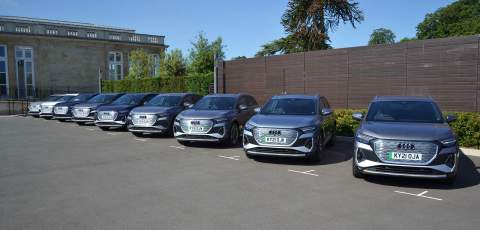


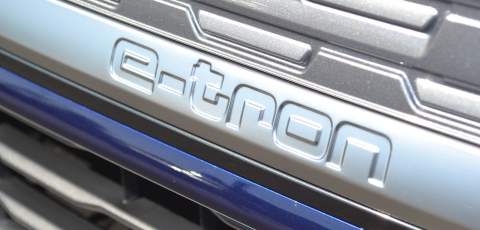
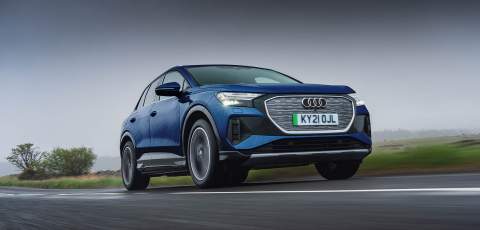
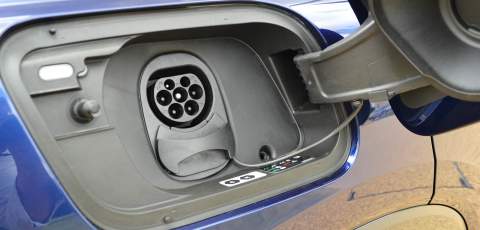
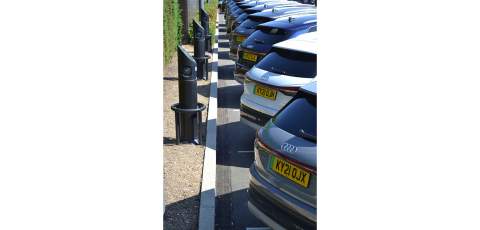
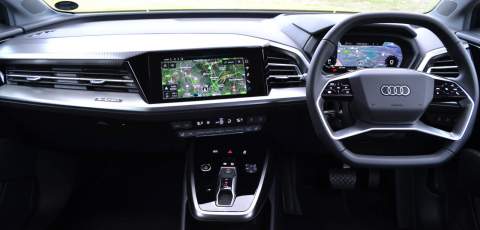
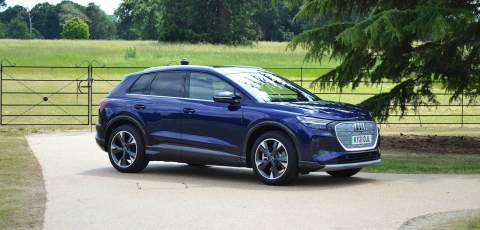
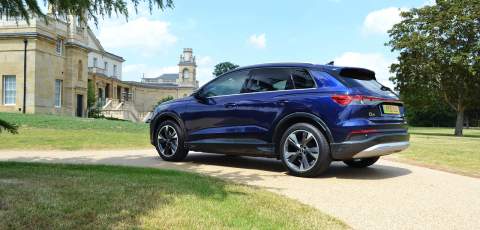
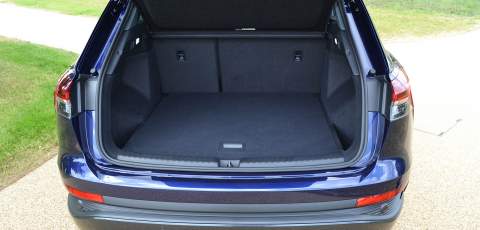
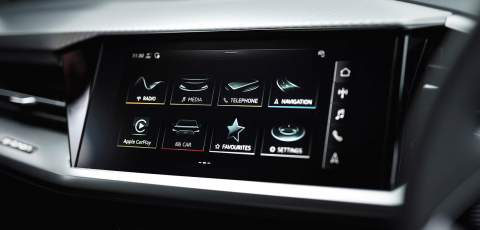
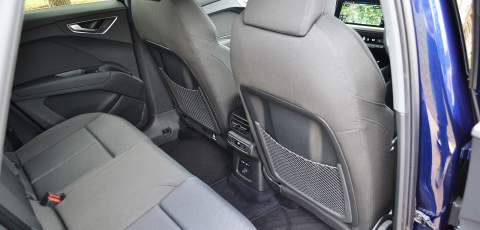
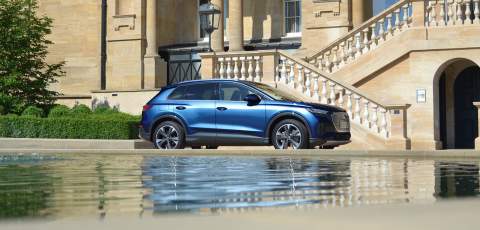

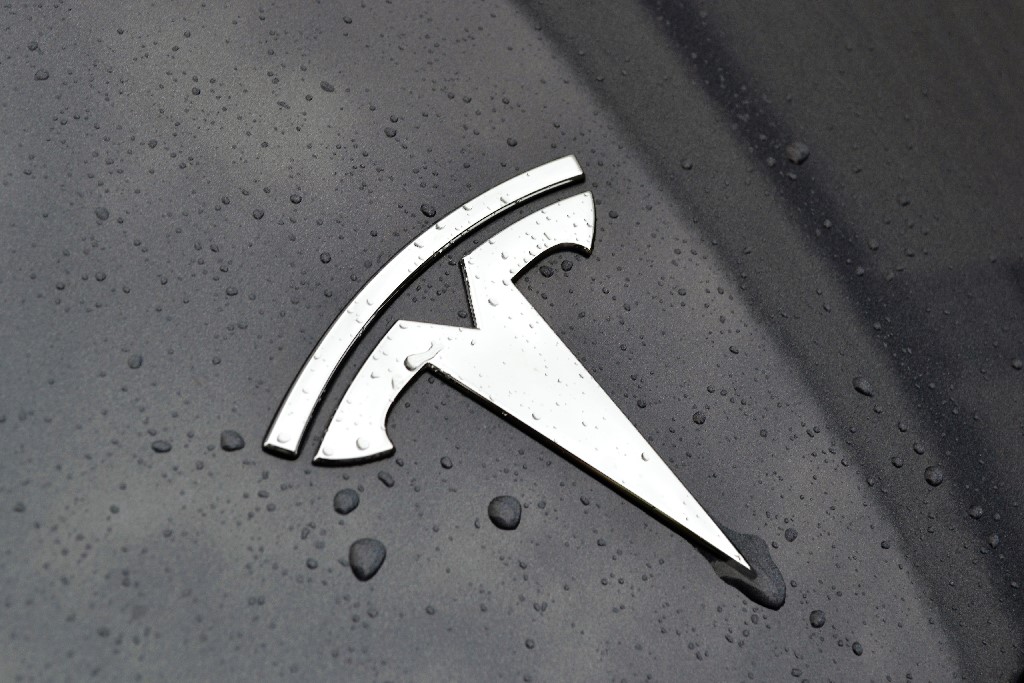
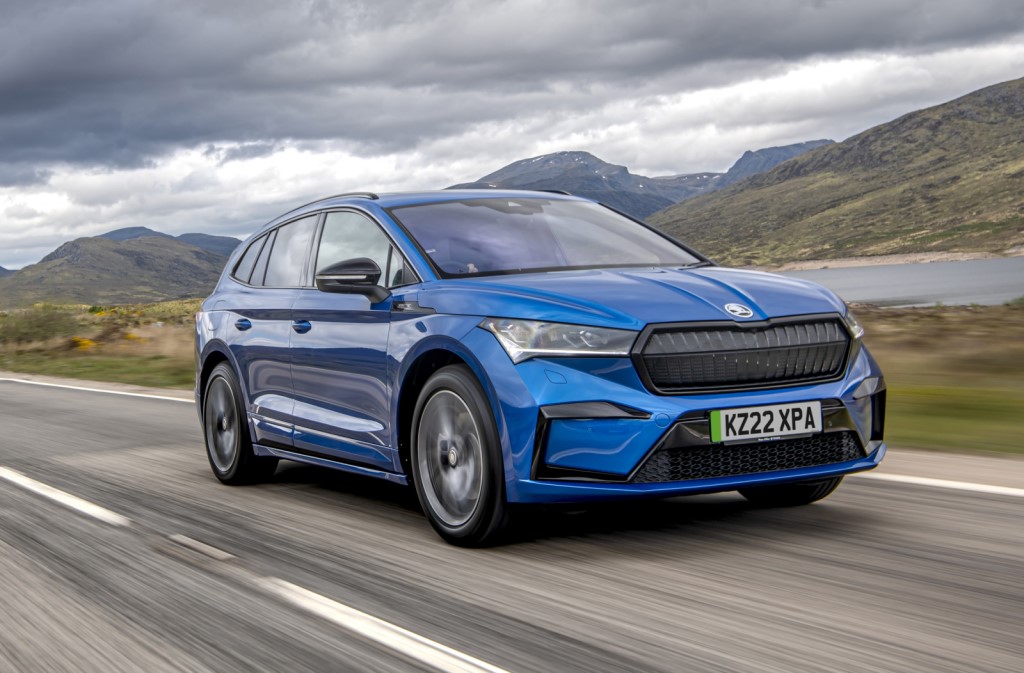
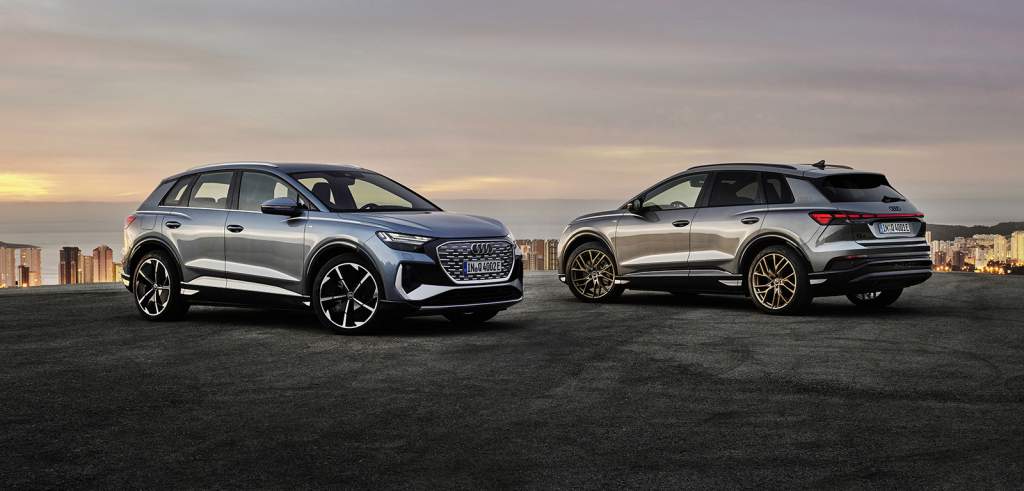
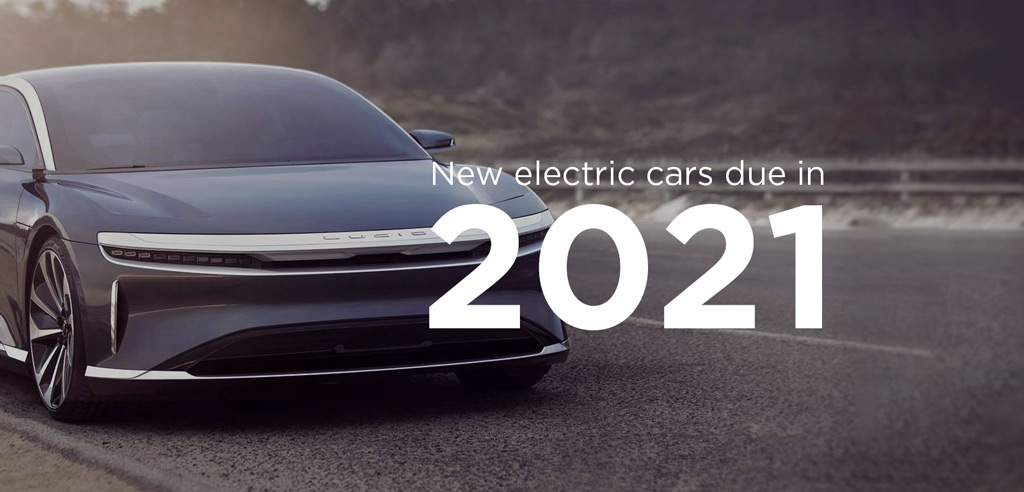
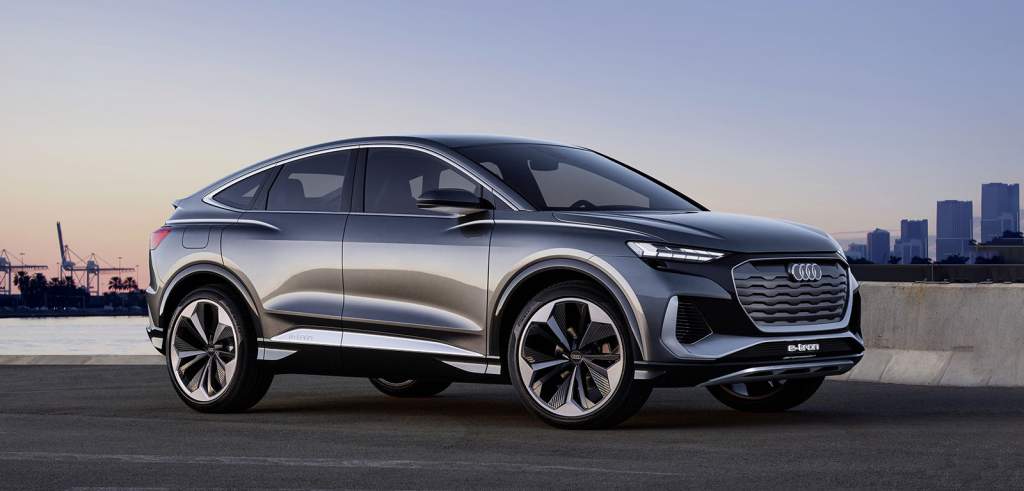
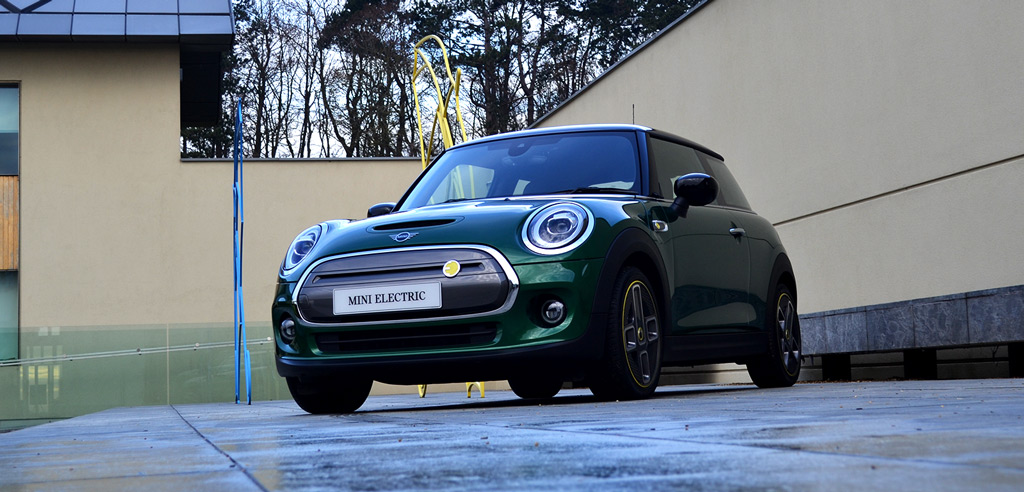

Comments (0)
Be the first to write a comment
Login/ Signup